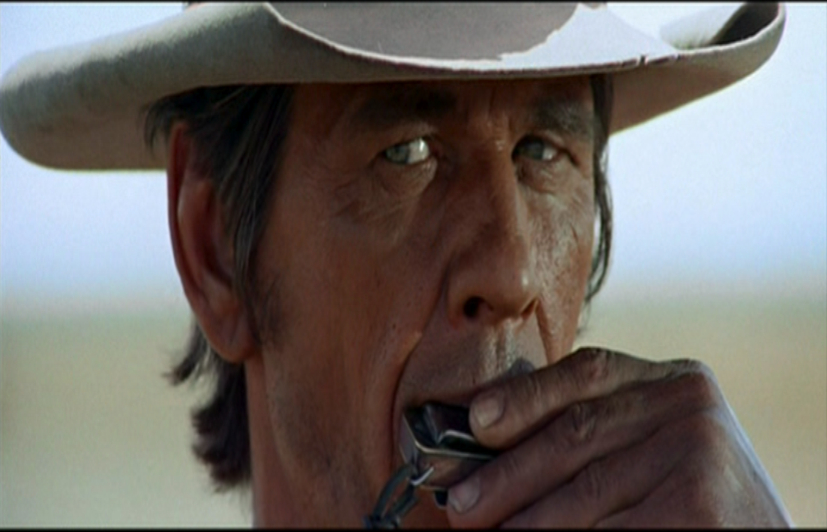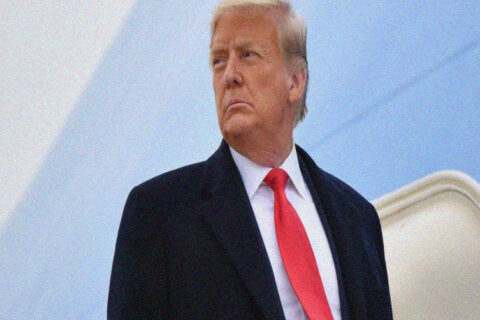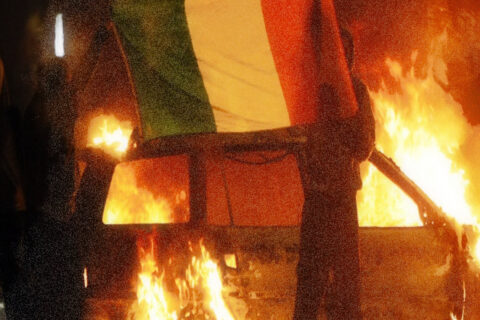It really is remarkable to see the near breathless coverage of January 6 play out in the media. The fact that so many in the media treat January 6 like it was an actual insurrection, rather than a group of normies led into a trap by Feds, really does reveal the mentality of the ruling-class and their media lapdogs. Many on the Dissident Right, and even a few on the normie Right, have noticed the discrepancy between the media’s coverage of January 6 and how they ignored the far more massive rioting that occurred throughout the summer of 2020. The reasoning behind this is simple enough – the riots of 2020 were aimed at Middle America, especially Dixie, and were perpetrated by the Establishment’s shock troops. By contrast, January 6 was aimed at the elite and perpetrated (ignoring the Feds, of course) by people whom the elites, quite literally, want dead. But what is also interesting is to review both “J6” and “A12” (Unite the Right, or UTR). In both cases, it was Middle America, especially the South, versus the Establishment and antifa; yet, far more ink, to say nothing of the effort to crush them, has gone into the January 6 narrative than UTR. The rationale behind this warrants some examination.
There are several, more superficial reasons for this discrepancy. The first one is simply a numbers game. There were many more people at January 6 than UTR, so more effort must be placed into hunting them down. Part of it is also a matter of optics – the people at UTR were labeled “Nazis” by the media – which a few decided to go out and prove – and since “Nazi” is treated worse than child molestation by the media, it was very easy to get most Americans to lose all sympathy for them. By contrast, the protesters at J6 grounded their optics in more American iconography, thus more effort is needed to demonize them. In the case of UTR, the groundwork to disparage the protesters was laid out decades ago. And most obviously, though the elites obviously supported antifa, what happened in Washington DC was a more direct threat to their power than something that happened in a small college town in Virginia.
Those are all good reasons, but I think they ultimately only scratch the surface of what is really going on here. By targeting the January 6 protesters for as long as they have, the elites are hoping to crush the segment of Middle America most capable of staging a revolution against globohomo. To understand what is going on, we must review one of the most important men of the Right in the late 20th century.
The late Samuel T. Francis is a man who needs no introduction in Dissident Right circles. I may have my disagreements with him, namely his ignoring of the importance of religion and his rejection of modern-day Southern secession (Francis was a proud Southerner and wanted Southerners to keep their identity but believed modern secession would split American Whites along sectional lines and at a time when unity was needed) – but there is no denying his brilliance. Even many on the Establishment Right and Left, despite denouncing him, still would note his genius.
Perhaps his most important idea is his understanding of the “Revolution from the Middle” – taken from a book of the same name. According to Francis, the historic American core, middle-class Whites, faced a threat from both the (disproportionally non-White) under-class that lived on welfare generated from their tax dollars and a (disproportionally Jewish) ruling-class that shipped jobs out, immigrants in, and promoted degeneracy. Because both the under-class and ruling-class were propped up by the system, the only real way to end it ran though the traditional middle-class: small business owners, managers, skilled blue-collar workers, etc. Francis was mostly drawing from the work of sociologist Donald Warren and his book The Radical Center: Middle Americans and the Politics of Alienation and focuses on the “Middle American Radical” – voters who consider themselves threatened by Democratic social policy and Republican economic policy and reject both (basically, the George Wallace voter). It’s a class theory – labeled producerism by some – that I like quite a bit. I think it explains how the system works very well and, more importantly, it allows the Dissident Right to establish a Third Position between the Marxist Left, and its slavish devotion to the under-class, and the Establishment Right (and the Left, too), with its servile fidelity to the ruling-class. It recognizes the threat the national core faces and provides a nation/people with a path toward independence and against globohomo.
I don’t want to paint with too broad of brush, but the January 6 protesters tended to be more from Francis’ Middle American core than the UTR attendees. Part of this is because of youth, the UTR protesters were younger and did not have the time to build themselves up economically. The January 6 protesters were older and had already established themselves and, according to Francis, were now in a better position to challenge globohomo.
The Establishment understands this and now considers it as absolutely paramount that the January 6 protesters be destroyed – they constitute a bigger threat to the system. Ever since the rise of Trump, the Establishment has been scrambling for answers as to what happened. Remember, they really did think they had uncontested rule after the failure of the Buchanan movement in the 1990s and the co-opting of the Tea Party in the 2010s. They looked into the ideological roots of this unexpected revolt and though many names came up, Sam Francis was undoubtedly one of the largest. His writings on the “Revolution from the Middle” is a remarkably accurate prediction of the rise of the Dissident Right two decades later. The Establishment still knows who Francis is, and although they may hate him, they also understand that he was more or less right about which segment of society could end the rule of the global elite.
The revolution against globohomo runs through the middle – through the small business owner, what is left of the conservative professional and managerial classes, and the skilled blue-collar worker. The under-class cannot do this – they have been bought off with welfare. The ruling-class cannot do this either, they have been enriched beyond all measure. It is the middle, recognizing both the economic and cultural threat of globohomo, a two-front threat from both above and below, that serves as the greatest adversary against globohomo. January 6 was a showcase of this realization, and the Establishment knows it. That is why they are working so hard to crush them. The elite are seeking to make an example of January 6, lest the rest of the “Middle American Radicals” start getting any ideas.







Excellent article! January 6th was an attack on Rome herself, the legions of Trumpians crossed the Potomac into the pagan holy city. This was the threat.
You are correct, the bulk of change will come from a rebellion of the middle. If they were more visionary, some elites should openly join with resources to secure a place in the inevitable political shift.
Thank you so much!
This is a really well thought out and articulated analysis, Sir.
A great piece I shared on Gab.
God Bless,
Padraig Martin
Thank you!
Very insightful. It seems as though the ruling classes fear and loathe the middle for the same reason, as per Hilaire Belloc that Jews often fear and loathe the vast majority of their gentile neighbors who are neither explicitly philo-Semitic nor anti-Semitic: they form a huge and intimidating wild card, usually quiescent but always retaining the possibility of suddenly rising en masse in opposition to those they see as their oppressors.
I’ve found Sam Francis interesting and extremely helpful in understanding elites but a bit indirectly dangerous in that, although he was not a militant atheist, his Machiavellian, everything-at-the-bottom-is-about-power style analysis can easily lead down that path, to such destructive ideas as the notion that Christianity was either a plot by Jews seeking to weaken or commandeer the Roman Empire or a plot by the Roman emperors to assimilate the unassimilable Jews (see, for example, some of the books mentioned in this article by Counter-Currents Christ-basher-in-chief James J. O’Meara https://counter-currents.com/2022/08/better-call-saul-christian-romanism-as-the-first-psy-op-part-1/
). A complete political theory needs to incorporate the possibility of true believers outside of and even within the elite circle. It’ll be interesting and nerve-wracking to see just how far the elites push the center.
Religion is without a doubt the biggest issue I have with Francis. His argument against Southern secession I can at least respect, especially since he was otherwise pro-South, but as Belloc said- “the faith is Europe and Europe the faith.”
In Timothy Stanley’s book on Pat Buchanan, he talks about the arguments between Buchanan, Francis, and Joseph Sobran on race and religion. Sobran thought religion was the most important and would downplay discussions on race while Francis thought race was the most important and would downplay religion. Buchanan was in the middle. That America remain White was important, but he also thought that free trade threatened black factory workers and immigration threatened the wages of native-born Hispanics just as they threatened Whites while both black Pentecostals and Hispanic Catholics were threatened by the same cultural forces that threatened White Christians. I certainly side with Buchanan on that debate.
The Crusader. I remember reading that some years back—in it I found out that the guy who taught Austrian econ at my college was Pat Buchanan’s campaign manager for Michigan—an odd combo, given Buchanan’s economic nationalism. Interestingly, it was the combination in early college of my familiarity with Austrian econ (mostly self-taught—I was actually an English lit/history major) and my affinity for economic nationalism, increased by reading Buchanan’s The Great Betrayal that made me wish to write my own econ work, one that would, if possible, show how a non-crony capitalist form of economic nationalism can increase national prosperity better than free trade. I put off the project for many years but began to work on it again recently, by which time I decided to fuse it with my own approach to history and with Christian theology to try to create the kind of all-explanatory system that the Marxists have (only not built on BS). It’s about half done. Because of how insightful I’ve found your writings—I only discovered ID a few months ago, but I’ve read a lot from your archives—and because of your familiarity with both Sam Francis and Austrian econ, I thought I might ask if you would be willing to read what of it I’ve written so far and tell me what you think of it: I could email it to the ID general staff and they could send it to you or, as T. Morris suggested (he has kindly offered to look at it and offer his opinion), through the Southern nationalism Telegram channel you advertise on your site. If you’d rather not, that’s ok: I know how busy most of you are, given that, unlike the professional chattering classes, you have real jobs and do this on the side.